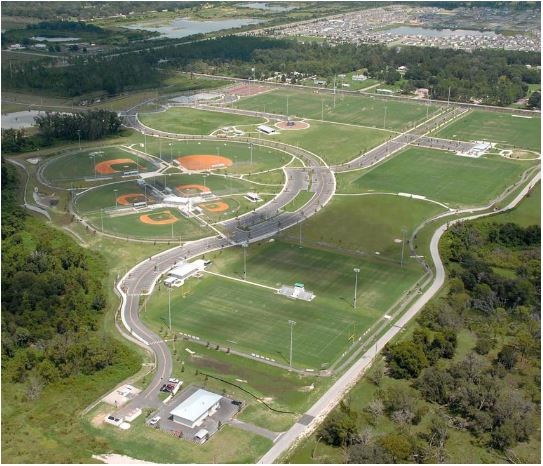THUNDER BAY -- When Fort William Planning Board chairman Clem Chapple floated the idea of a civic recreation centre in the 1940s, his wildest dreams couldn't have matched the visions being considered for the park that bears his name today.
Sierra Planning and Management consultants unveiled three options in their draft Chapples Master Plan on Wednesday evening to a crowd of 40 people at the Da Vinci Centre. Their ideas ranged from redefining Chapples as a neighbourhood park to expanding it into a "premier sports hub."
At its most simple, it hopes to improve signage and field drainage. At its most complex, it asks whether Chapples should become a recreation destination.
Sierra director Jonathan Hack was clear that although his team has taken emerging local sporting trends into account, no costing for any of the three models has yet been conducted.
"These are ideas. The feasibility of each of them from a financial perspective is something that will have to come later but the idea here is to develop a plan that everyone can rally around," Hack said.
"In this particular case, look at the three different plans, agree with the them, disagree with them, prioritize the elements people want and we then can go from there in terms of creating a better plan."
The first option labeled "balanced park for the community" would make Chapples as much of a passive activity park as a centre for organized sport. While it would commit to fewer soccer pitches and ball diamonds, it would ensure those that remained would be built to a high standard.
The second option known as "city wide sports park" would develop Chapples as a haven for Thunder Bay's organized soccer, tennis and baseball scenes with premium facilities. It suggests as many as eight soccer fields could operate with synthetic turf covering as many as would be financially feasible. It would host five or six ball diamonds, an indoor facility for soccer and tennis, possibly a swimming pool and an off-leash dog park area as well as a BMX and skate park zone.
The third option would make Chapples a "premier sports hub" that could accommodate regional and national sporting events. On the passive recreation side, it would include everything from the city-wide model on top of cross-country skiing, fat biking winter trails, interpretive trails, playgrounds with splash pads, and open spaces for community activities like farmer's markets.
As Sierra intends to marry the city's next Recreation Master Plan with the Chapples plan, some of its elements are consistent across all three options. Those include leaving Friendship Gardens unaltered, twinning the ice surface at Delaney Arena, maintaining existing track and field infrastructure, and allocating space for a multi-use, indoor facility.
Under all three options, the golf course would still occupy the lion's share of the park's terrain but each plan offers a different vision of the role golf should play in the park's profile. It asks the city to consider reducing the course to nine holes or converting it into an 18-hole, par-three course, which would target seniors and youth.
Sierra has launched this online survey to consider public feedback on the Chapples plan. Hack will present the report to city council on Nov. 14.
Picking up the tab
Chapples Park construction won't cost taxpayers a dollar in 2017, according to city corporate projects manager Lou Morrow.
Easing the crowd's tension over the undefined costs of particularly Option Three, he pointed out building three new park entrances alone would take environmental assessments and a year-long public consultation.
"What we're talking about is a long-term vision and if the public wants to see us move in that direction and council agrees, we'll put a plan in place to get there," Morrow said.
"But I don't think it's going to be short term for some of these bigger picture, bigger-dollar ideas."
Hack used the growing tennis community as an example of what bigger-dollar ideas might be possible. A bubble around the existing outdoor courts might meet the rudimentary needs of the tennis community but he said tennis players want an indoor facility exclusively dedicated the sport. Minimizing municipal costs, he explained, will mean the organized sports communities will play a central role in funding.
"A business plan has to come forward where there's a real partnership approach to it and the city isn't exposed for covering deficits for yet another facility," Hack said.
"If that can all happen, it's a great project and really, the same is true of soccer. If the soccer bodies wanted to take the lead in developing indoor facilities, the city can partner but itself wouldn't be the programmer or the largest capital contributor."
Coun. Iain Angus told the crowd Chippewa Park improvements tapped $6.4-million the city was ineligible to receive from such partnerships. Similar leverage was achieved working with the Thunder Bay International Baseball Association. Angus said those partnerships unlock public sector capital.
"We have partners at Chapples. We have soccer, we have tennis, separate, not-for-profit organizations. They can tap dollars the city of Thunder Bay can't apply for, then we can use their dollars to lever other dollars," Angus said.
"On one hand, it gets the project done. On the other hand, it reduces the cost to the property taxpayer."
